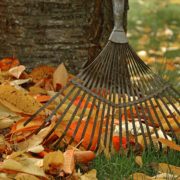Seven Tips for an Active and Healthy Thanksgiving
Thanksgiving is one of my absolute favorite Holidays. I love all the food, sweets, time with family, the Macy’s Day Parade, afternoon naps, and football. While it’s historically been a time for indulgence and relaxation, more and more people are opting for a more active and healthier Thanksgiving Day. And there are numerous benefits for doing so… boosted mood and energy levels (which can make your day even more enjoyable), improved digestion, happier hips, knees, and back, and you’ll offset some of the extra calories you may have consumed.
If you’re looking to be more active and healthy this Thanksgiving – here are seven tips to make it easy for you:
-
Interrupt your sitting
We were not designed to sit for prolonged periods, so getting up frequently is an easy way to not only incorporate movement throughout your day, but to help keep away back, hip, and knee stiffness. I recommend standing up at least once every 30 min. This could be a fun “job” to give a young child. Make them accountable for watching the clock and remind you to stand up. This is quite possibly the easiest and most effective strategy to keep your knees, hips, and spine from getting painful and stiff – and it’s an easy way to stay a bit more active this Thanksgiving.
-
Sign up for a Turkey Trot
Thanksgiving Turkey Trots are a popular event in most towns and it can be a really fun event for the whole family. Turkey Trots are typically 5K’s – or 3.2 miles. If you’re not able to sign up for an actual race, grab your friends and family and create your own Turkey Trot within your neighborhood. This is a great way to get your blood flowing and joints lubricated first thing in the morning. Plus, it will help offset some of those extra Thanksgiving calories.
-
Stretch during Commercials
Whether it’s the Macy’s Day parade, football, or both – it’s easy to find yourself lounging for hours on a soft sofa or recliner. A very easy way to keep yourself from sitting or slouching too much, and to incorporate some healthy movement into your day, is to get up during commercials. It’s the perfect opportunity to do a quick 2 min exercise or stretch. It doesn’t have to be complicated. Choose from a quick set of squats, heel raises, planks, or back stretches. And make it fun. Get a plank or squat competition going with your most competitive family members – you know who they are.
-
Walk your Dessert Off
While skipping dessert is of course an option – why not just walk it off instead? Choosing to walk off your dessert rather than skipping it strikes a balance between indulgence and staying healthy. Plus, opting for a post-meal walk has many benefits. It aids digestion, helps regulate blood sugar levels, and it’s good for your hips, back and knees. A post-meal walk is an opportunity to get some much needed lengthening and stretching of our muscles and joints after being parked in a chair for a length of time. It’s also one of the best and most natural exercises you can do for yourself – but it’s especially great to do after a big meal like Thanksgiving – and before you settle in for the evening.
-
Help with clean-up
Don’t be shamed into “just sit down and relax” because you’re a guest. Helping with clean-up (or set-up) is an easy and effective way to keep moving during your Thanksgiving Holiday. Not only will your Thanksgiving host love you – but your body will too. If you’re suffering from back problems, be careful bending and leaning over – especially if it’s repetitive – when you’re collecting or washing dishes. But otherwise, carrying heavy plates, moving chairs, and wiping down tables can burn quite a few calories and it’s good for your body.
-
Stay hydrated
Staying hydrated is important all of the time – but especially on a day like Thanksgiving. Good hydration will help regulate your digestion, which is particularly important given the heavy and often rich foods we typically consume during this holiday. Plus, water aids in breaking down food, allowing for better nutrient absorption and preventing digestive discomfort. Staying hydrated also helps with maintaining your energy levels and keeping your mind clear. When it comes to appetite, we often mistake thirst for hunger, so when you stay hydrated, you have more control over your portions and are less likely to overeat. When you stay hydrated – it not only supports your body’s essential functions – but making healthier choices becomes easier – which will contribute to a more balanced and enjoyable Thanksgiving Day.
-
Make your dishes health-conscious
It’s easier than ever to make your traditional Thanksgiving recipes more health conscious. Start by reducing the amount of sugar and salt in recipes, and consider natural sweeteners like honey or maple syrup instead. When it comes to stuffing and flour – opt for whole grains instead of refined ones. Incorporating more fruits and veggies can boost the nutritional value of traditional dishes, and sticking to lean meats such as turkey breast is a healthier choice compared to something like ham. Lastly, watch your portion sizes. Don’t dump everything you see onto your plate – however tempting it might be – and eat slowly. The faster you eat – the more you tend to eat.
There you have it – seven easy tips to make your Thanksgiving more active and healthy.
I hope you have a wonderful Holiday and get to spend it with those you love most.
Dr. Carrie Jose, Physical Therapist and Pilates expert, owns CJ Physical Therapy & Pilates in Portsmouth and writes for Seacoast Media Group. To get in touch, email her at [email protected].



